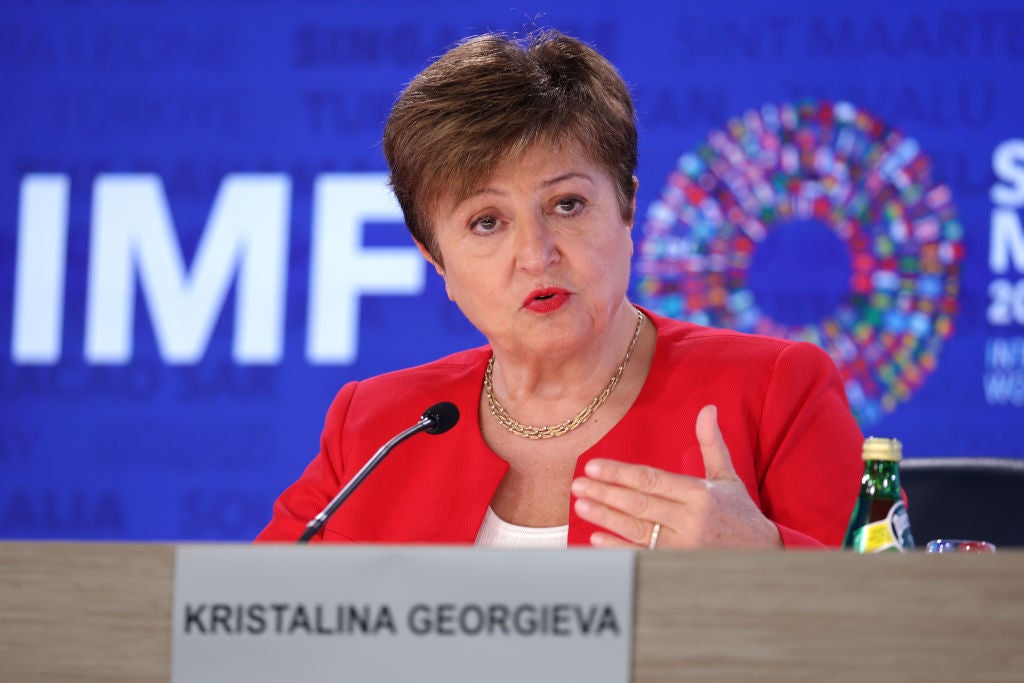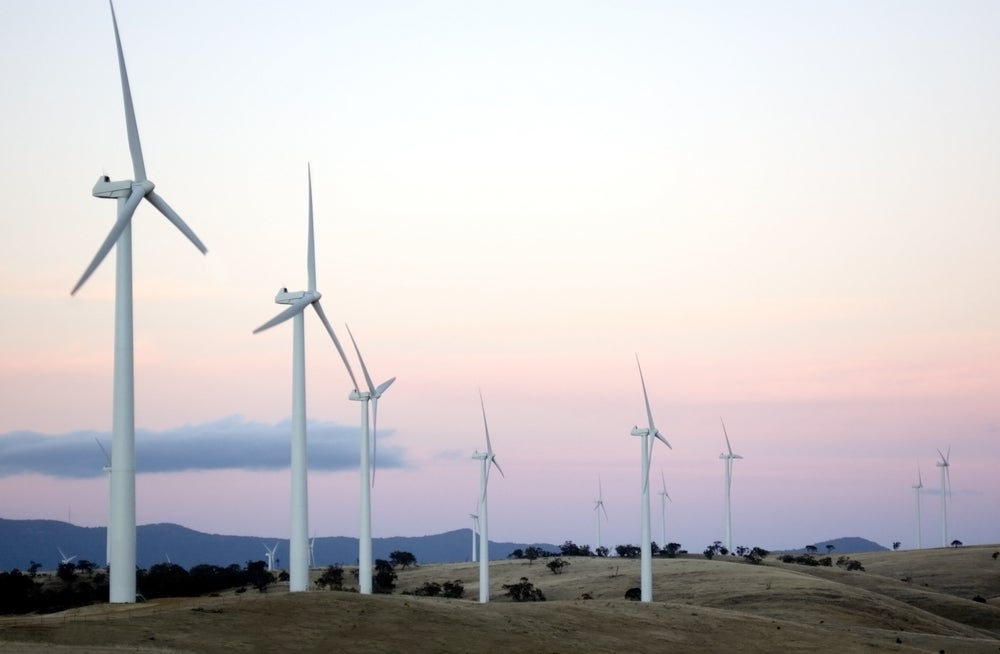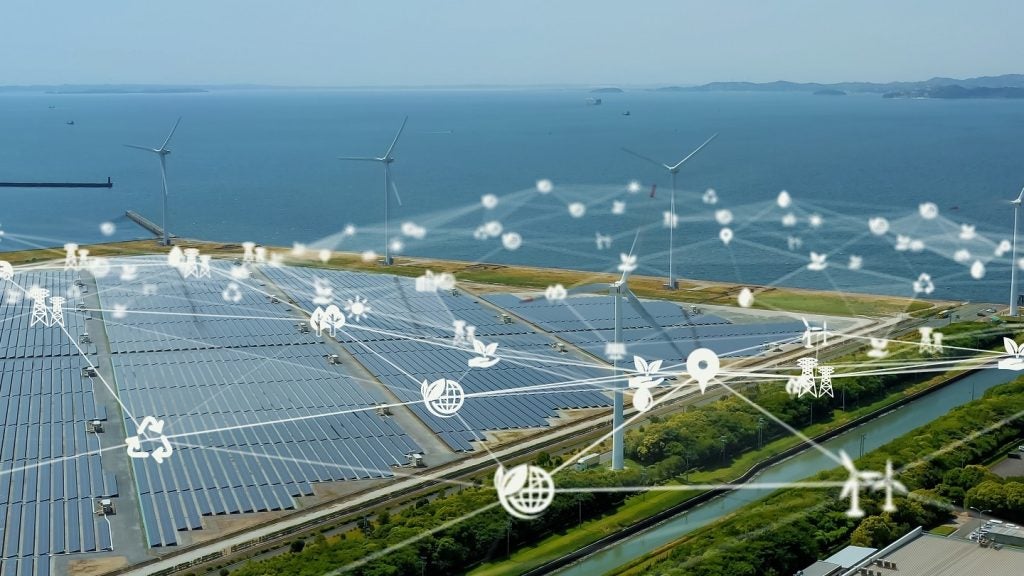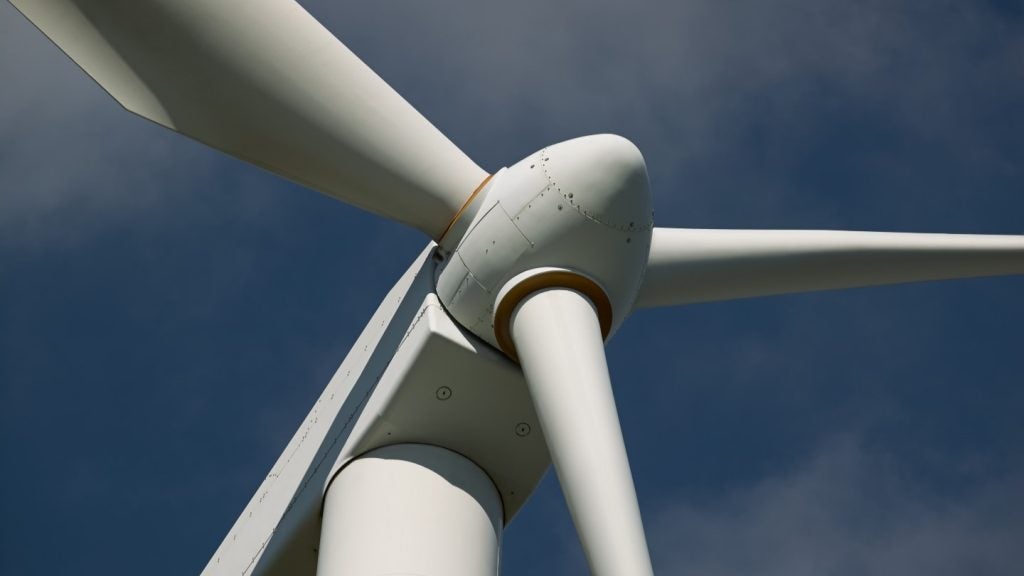This year, the World Bank and the International Monetary Fund (IMF)’s 2024 annual Spring meetings fell on the 80th anniversary of the 1944 Bretton Woods Agreement. Prompted by the need to respond to the economic fallout from the Second World War, Bretton Woods saw the creation of the two leading pillars of today’s existing system of global coordinated monetary policy: the International Reconstruction and Development (now called the World Bank) and the IMF.
Eight decades later, in the face of worsening economic inequalities and a breakdown in global international relations compounded by global shocks like the Covid pandemic, the war in Ukraine and the climate crisis, world leaders are calling for a “new Bretton Woods moment”.
The need for an urgent transformation of global financial architecture was noted at April’s Spring meetings, where the World Bank observed that for the first time this century, the world’s 75 most vulnerable countries are facing a widening income gap with the wealthiest economies, in what it calls a “historic reversal”. In a similar vein, the IMF warned of a “widening cross-country divergence” when it comes to global growth, with the decline in growth prospects relative to historical levels “especially pronounced” in emerging market and developing economies (EMDEs).
At the root of this, argues a UN policy brief, are “deeply rooted” inefficiencies embedded in our current system of global financial architecture: higher borrowing costs for developing countries; “vast variation” in countries’ access to liquidity in times of crisis; and “dramatic underinvestment'' in public goods including climate action, as well as “volatile financial markets and capital flows”.
Not only has this resulted in “disjointed responses” to economic, financial, food, energy and related crises, it also means that our current financial architecture is “unable to support” the mobilisation of stable and long-term financing at scale for investments needed to combat the climate crisis.
As Energy Monitor has previously reported, attempts at global financial architecture reform are already well under way, with most discussions so far mainly centred on multilateral development banks (MDBs). As one of the world's largest sources of funding for developing countries, the World Bank has so far led the charge on global financial architecture reform in recent months: ever since the exit of former climate sceptic chief David Malpass in February, the bank has pursued a reformist agenda, including by creating a Private Sector Investment Lab to identify financing approaches that can be implemented and scaled to mobilise capital more effectively, and unveiling new steps to increase lending capacity.
Pressure building on the IMF
Unlike the World Bank, the IMF has until recently been largely absent from the global financial reform agenda when it comes to climate change. Speaking to Energy Monitor, senior policy advisor at climate change think tank E3G Franklin Steves argues that while “broader campaigning attention has been very much focused on the World Bank, and its evolution in that process”, only now is the focus “really starting to turn to the IMF”.
As a lender of last-resort, the IMF has struggled to shake its reputation as a conservative and innately restrictive institution with a history of imposing tight lending conditions on poorer countries, sometimes with devastating consequences for their development. As noted by Danisha Kazi, senior economist at the left-leaning think tank Positive Money, because voting power and decision-making at the IMF is explicitly tied to the size of member countries’ financial contributions, it remains “largely controlled by Global North economies which have tended to hold back on radical reforms”.
Kazi adds that “conditionalities attached to loans provided to Global South countries limit their fiscal space to invest in their social, development and environmental priorities”, with many Global South economies “spending more on debt servicing costs now then they do on health, education and climate response”. She points to an analysis from Oxfam, which reveals that for every dollar the IMF provides to a poor country for social spending, four dollars must be cut through austerity measures.
Nevertheless, over the past two decades, a series of external shocks have forced the IMF to liberalise its lending policies; for example, in 2010, as the European sovereign debt crisis unfolded, the IMF played a “ground-breaking role” in its speedy acknowledgement of the dynamics of the crisis. A decade later, the IMF applied this muscle memory by rapidly disbursing emergency assistance to countries in West Africa following the Ebola virus outbreak, and later again on a global scale during the Covid-19 pandemic, when the institution delivered commitments worth $118bn in emergency loans.
However, an enduring issue with the IMF is that it remains “much harder… than it should be” for developing countries to access its funds, says Michael Jacobs from the think tank the ODI. “You would have thought that in today's world where the countries that really get into financial difficulties are the middle income and lower income countries… the IMF will be very responsive to them, [but] it is actually much harder [for them] to get their money than it is for a developed country,” he says.
One key example of this is the unequal distribution of Special Drawing Rights (SDRs), an international foreign exchange reserve asset aimed at meeting liquidity needs and supplementing the official reserves of member states facing balance of payments crises.
As Jacobs notes, one of the key problems with SDRs is they are disproportionately allocated to richer countries. In 2020, the IMF unlocked a “historic” $650bn in SDR allocations – the largest sum in its history, in order to “benefit all members, address the long-term global need for reserves, build confidence, and foster the resilience and stability of the global economy”. However, around half ($375bn) of this sum went to high‑income countries, with just $275bn and $21bn going to emerging markets and developing countries, and low income countries, respectively.
Re-evaluating the role of the IMF
The pressing question that must be addressed is what the IMF’s role should be in helping to deliver and coordinate this funding. Speaking to Energy Monitor, Mark Plant, senior policy fellow at the Center for Global Development (CGD), argues that to answer this, we must consider what the actual role of the IMF is. Unlike the World Bank, which is primarily a lending institution, with the goal of financing financial economic development, the IMF acts as an overseer of countries’ monetary policy, with the goal of promoting financial stability and cooperation between countries. As a result, he says, it is “not a natural candidate” to be tasked with handling climate change”.
Nonetheless, he counters, given that the climate crisis has “huge macroeconomic implications”, given that the energy transition will change the “relative valuation of assets around the world”, there is an important role for the IMF to play via its three main pillars: surveillance, lending and technical assistance. Indeed, research shows that if exposure to climate hazards was almost doubled, the 30 least-developed countries' chances of defaulting on debt will increase by more than 1,000%, creating a major problem for the IMF.
Dileimy Orozco, senior policy advisor at E3G’s Orozco, agrees. Speaking to Energy Monitor, she says that the threats posed by climate change are “global, comprehensive... affecting security and prosperity as well as the well-being of nations”. She adds that “all of those risks could create significant impacts at the macroeconomic and financial level”, meaning monitoring climate risk falls under the “core mandate of the IMF in terms of securing economic stability, but also helping countries to manage balance of payments, and potential external shocks”.
Climate change has already found its way onto the IMF’s agenda: in a policy brief published during the meetings, the IMF notes that the “decline in growth prospects relative to historical levels is especially pronounced in emerging market and developing economies (EMDEs), making it more difficult for them to converge toward higher income levels and, for some, to tackle climate change, reduce poverty, ensure food security, and progress toward the Sustainable Development Goals”.
Under the helm of Kristalina Georgieva, who was last confirmed as managing director for a second term, the IMF has taken several steps to incorporate climate change into its decision making. Since taking on the role in 2019, Georgieva has demonstrated a “steadfast commitment to maintaining the IMF’s effectiveness in navigating the new challenges its members face”, noted E3G in a recent briefing.
These efforts include adding climate change data for macroeconomic and financial stability analysis; paying increasing attention to climate risk analysis for the financial system in its Financial Stability Assessment Programmes; establishing a Climate Policy Assessment Tool (CPAT) to analyse the impact of carbon pricing and other policies for Paris pledges and energy subsidies, and perhaps most significant, creating a new fund to support climate-vulnerable countries: the Resilience and Sustainability Trust Fund (RST).
Operational since October 2022, the RST was set up with the explicit purpose of helping countries “build resilience to external shocks and ensure sustainable growth, contributing to their long-term balance of payments stability”.
One example of financing through the RST came as a result of the majority of the $650bn SDRs going towards richer countries. In response, the G20 committed to voluntarily contribute $100bn of ‘excess’ SDR reserves to more vulnerable countries through rechannelling pathways including the RST, along with the IMF’s Poverty Reduction and Growth Trust (the IMF’s concessional lending arm), multilateral development banks and bilateral arrangements. As of November 2023, reported pledges to the RST totalled $41.1bn, with 11 countries in receipt of RST loans.
IMF’s green agenda “shaky” so far
While such developments are welcome, critics have pointed out that, in the words of Dileimy Orozco, their implementation has been “shaky”. For example, a number of think tanks including E3G, the ODI and the CGD have flagged issues that have arisen from the RST’s inability to smoothly direct funding to where it is most needed.
As noted in an October 2022 briefing from the ODI, with the RST, the IMF set itself the tricky task of designing a mechanism that “can link its operations with global public goods concerns, while reassuring creditors that they can get their monies back”.
In order to appease creditors, the IMF imposed a number of stringent lending conditions on RST funding: namely, countries seeking support from the RST must meet two criteria: first, they must demonstrate high-quality measures in climate transition or pandemic preparedness, and second, they must have a parallel IMF-supported programme, with or without financing, that adheres to “upper credit tranche” (UCT) quality policies, with at least 18 months remaining in the accompanying UCT program.
As the ODI notes, one of the consequences of such stringent lending conditions is that the RST has failed to attract “a wave of new borrowers to the IMF”; with the notable exception of Rwanda, the RST has provided more IMF financing for countries with existing IMF programmes. As a result, notes ODI, the Trust is “effectively being deployed as a new arm of adjustment lending”.
In addition, according to the CGD, just 26 out of the 142 eligible countries have a UCT programme with at least 18 months remaining, so assuming each of these countries borrows up to the maximum allowed, the potential borrowing from the RST for these countries amounts to just $16.1bn, falling significantly short of the total pledges made by countries. As a recent E3G brief notes, “stringent eligibility criteria may prevent vulnerable countries without existing IMF programs from accessing financing under the RST”.
Building a spaceship with a hammer: the IMF’s existing approach to climate change
More broadly, critics argue that the RST’s failures can be linked to the IMF’s failure to treat climate as a macroeconomic issue, and move beyond its inherently conservative lending practices. As noted by E3G, “economic resilience requires fiscal flexibility, yet current programs often emphasize fiscal austerity”; for example, as a separate briefing from the ODI notes, “where programmes have been approved, they have typically involved fiscal retrenchment, which runs counter to a narrative of investing in future resilience”, with a “key constraint” of the model being that it requires subsidies to cover the costs of providing interest-free loans.
The IMF is “trying to use their traditional tools to address… issues that they are not familiar with”, Orozco tells Energy Monitor, adding that their existing approach to the climate crisis is akin to “trying to build a spaceship with a hammer”.
For Mark Plant, the critical question for the IMF going forward is “where [it] draw[s] the line between these grand macroeconomic issues, and the day-to-day issues” of the energy transition. For example, he argues, while it may not be within the remit of the IMF to offer an opinion on whether or not a country like Ghana should be developing coal plants or gas plants, instead of solar energy, or whether a country like Burkina Faso should be spending more money on climate mitigation, in this latter case, what it could do is to apply its expertise in surveillance and data gathering to “help [the country] to think about what it needs to do to adapt, as the Sahara Desert increasingly encroaches on its farmland”.
Instead of offering advice on the specifics of adaptation projects, the IMF could gather the necessary information, and then “turn to the World Bank, or to others” for assistance on budgeting, Plant concludes.
In short, in order to move beyond its current approach, in which it is “crawling its way through the climate transition”, the IMF must learn to “depend on others for expertise in helping governments”, despite in Plant’s words, not having the “best track record” when it comes to developing partnerships.
Collaboration is key
Plant’s advice echoes recent recommendations set out by E3G regarding what Kristalina Georgieva’s priorities should be regarding climate going into her next term. A key priority, the think tank says, must be more collaboration with the World Bank and other MDBs on climate, as they have “far more experience on climate issues”. In addition, E3G argues that the IMF should ensure that its interim review of the RST “includes potential adjustments”, as the “lack of clear metrics for measuring the RST’s success obscures significant design flaws”.
Finally, E3G says that going forward, the IMF should ensure close collaboration with shareholders to facilitate the use of SDRs by MDBs as hybrid capital; and consider “regular issuance of SDRs in the future, utilising available mechanisms to enhance global economic stability and support sustainable development efforts”.
Ultimately, says Plant, when it comes to the IMF’s response to climate, it is key that it doesn’t “tell countries how to make the climate transition”. Instead, the IMF must leverage its existing capabilities in surveillance, lending and technical assistance to gather the necessary information, and then act as a partner to other organisations, to figure out a climate strategy that minimises risks from climate impacts and guarantees macroeconomic stability for decades to come.















